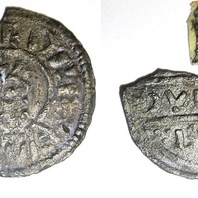
Viking Objects
Coin of Burghred of Mercia (1989-58/3650)
A silver penny of Burghred of Mercia, found in the mass grave at Repton, minted by the moneyer Dudwine. Dudwine may be the same moneyer who was minting coins for Alfred the Great at a later date. Burghred was king of Mercia from 852-874 CE. He was driven out of Mercia by the Vikings during their march from Lindsey to Repton in 874 after they sacked Tamworth. Burghred fled to Rome, where he eventually died, and was replaced by Ceowulf II who was loyal to the Vikings. Minting coins was a way of controlling the means of exchange within a kingdom and which created a more easily administered standardized system of trade. Moreover, the coins themselves were often used as propaganda, portaying symbols and statements that gave off a desired message. The Vikings later used the minting of coins to legitimize their own rule.
Read More
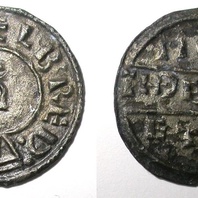
Viking Objects
Coin of Alfred the Great (1989-58/3386)
A silver penny of Alfred the Great, found in the mass grave at Repton, was minted by a moneyer called Tidhelm in London. Alfred was King of Wessex from 871 to 899 and spent most of his reign fighting off Viking invasions. He won a decisive victory at the Battle of Edington in 878 which resulted in a peace with the Vikings and the creation of the Danelaw. Minting coins was a way of controlling the means of exchange within a kingdom and which created a more easily administered standardized system of trade. Moreover, the coins themselves were often used as propaganda, portraying symbols and statements that gave off a desired message. The Vikings later used the minting of coins to legitimize their own rule.
Read More
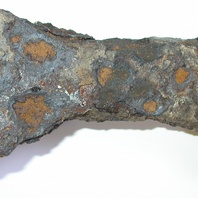
Viking Objects
Iron Axe-head (1989-58/3296)
Axes were not only a common implement used for a variety of wood based activities, such as constructing ships, but also were often used as weapons. Axes came in a variety of shapes and sizes depending on their function. This one was made to be a weapon and would have been wielded with a single hand. It was found at Repton in Derbyshire where there was a Viking camp which was recorded in the Anglo-Saxon Chronicle under the year 873/4.
Read More
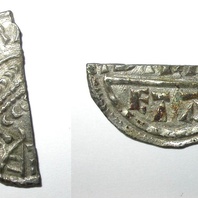
Viking Objects
Coin of Burghred of Mercia (1989-58/3723)
A silver penny of Burghred of Mercia, found in the mass grave at Repton, minted by the moneyer Dudda, probably in London. Burghred was king of Mercia from 852-874 CE. He was driven out of Mercia by the Vikings during their march from Lindsey to Repton in 874 after they sacked Tamworth. Burghred fled to Rome, where he eventually died, and was replaced by Ceowulf II who was loyal to the Vikings. Minting coins was a way of controlling the means of exchange within a kingdom and which created a more easily administered standardized system of trade. Moreover, the coins themselves were often used as propaganda, portaying symbols and statements that gave off a desired message. The Vikings later used the minting of coins to legitimize their own rule.
Read More
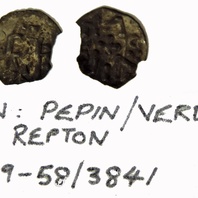
Viking Objects
Coin of Pepin III (1989-58/3841)
This is a silver denier of Pepin III, also known as ‘the Short’ (King of the Franks 751-768), minted at Verdun. The Vikings would have obtained real and imitation Carolingian coins through their raiding and trading activities in the Frankish Empire.
Read More
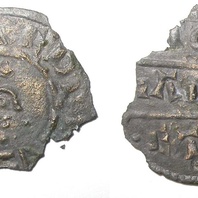
Viking Objects
Coin of Aethelred (1989-58/3395)
A silver penny of Aethelred I of Wessex was found in the mass grave at Repton and minted by a moneyer apparently called Liabinc. The location of minting is unknown. Aethelred I was King of Wessex from 865 until his death in 871. Aethelred’s reign coincided with the arrival of the Viking Great Heathen Army in England and he fought them with little success during their invasion of Wessex which began in 870. After his death, he was succeeded by his youngest brother, Alfred the Great, who carried on the war with the Vikings. Minting coins was a way of controlling the means of exchange within a kingdom and which created a more easily administered standardized system of trade. Moreover, the coins themselves were often used as propaganda, portraying symbols and statements that gave off a desired message. The Vikings later used the minting of coins to legitimize their own rule.
Read More
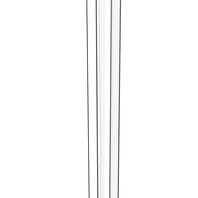
Viking Designs
Drawing of a Viking Sword
This is a drawing of a Viking Age sword which was found in Grave 511 at Repton where the invading Viking Great Army had their winter camp in 873/4. When it was found, the sword had traces of a wooden scabbard attached to the rusted blade. Analysis showed that the scabbard was lined with fleece and covered in leather. The grip was wooden and covered in a woollen textile.
Read More
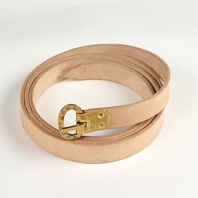
Viking Objects
Reproduction Belt
A vegetable-tanned leather belt with a decorated copper alloy belt buckle. The buckle has a ring and dot pattern and is based on one found in Grave 511 at Repton, Derbyshire.
